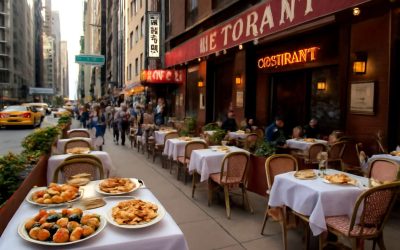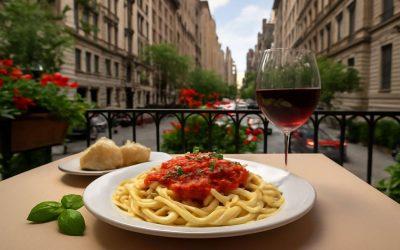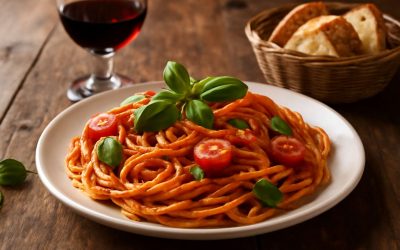
Italian restaurants are a beloved fixture in American dining. One thinks of flying pizzas, slippery strands of spaghetti paired with plump meatballs that most have savored since childhood, gregarious owners and a noisy room filled with Sinatra and Martin or Verdi and Donizetti, garlickly toasted bread quick to leave a grease stain, and generous mounds of food accompanied by copious amounts of wine. This is the cliche image that most people have of an Italian restaurant, but there is more than meets the eye.
In the early 1900s, many Italian immigrants opened a variety of cheap restaurants to feed themselves and the workers in their boarding houses. The restaurants were called osterie or trattorie, and they were very different from the high-end fine Italian eateries of the day. The restaurants were aimed at immigrant men without families who labored during the day, and they did not want to pay for expensive steaks or chicken. So, the restaurants focused on a wide range of inexpensive meat entrees like kidneys and liver, veal in various forms, and nondescript stews.
These Italian restaurants were quite popular in the United States and were a precursor of the chain restaurants that are now very common. As the country became more populated, there was increased demand for Italian food and more and more restaurants opened to meet that demand. The restaurants were not conscious replications of eateries in Italy, but they may have resembled those types of simple places that served the working class.
Unlike other cuisines, which have specific dishes that are the same across the country and in the different regions, Italian cooking is much more diverse. In the early 20th century, Italy was not unified into a single national cuisine and there were scores of different foods from city to city and region to region.
There are a number of different types of Italian restaurants, and each serves a slightly different type of cuisine and has its own personality. For example, a ristorante is a more formal establishment that provides table service and offers a list of antipasti (appetizers), primi (first courses) and secondi (main courses). An enoteca is a wine bar that usually only serves glasses of wine but sometimes has small bites to go along with them. An osteria is the Italian equivalent to a pub or tavern, and it is generally smaller and more casual with a laid back atmosphere. The rosticceria is similar to an osteria but it is often a place that sells roast meats and other ready-made meals for dinners at home. There are also a few Italian cafes that are very different from any other type of café. They serve coffee, tea and other beverages, but they are also often serving pasta, pizza and other baked goods. These cafés are usually family-run and have a very relaxed atmosphere.



0 Comments